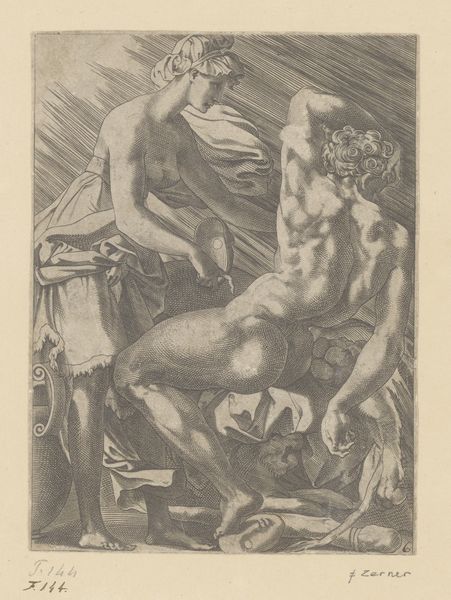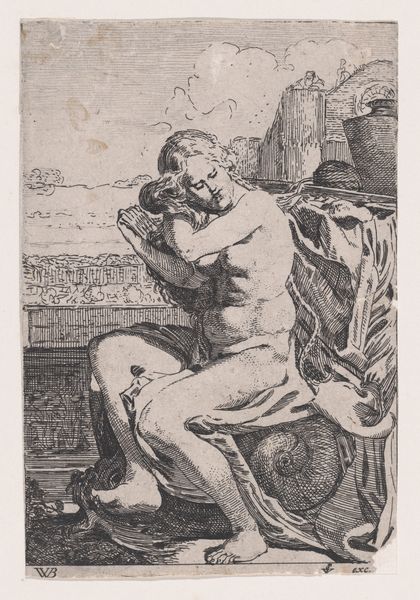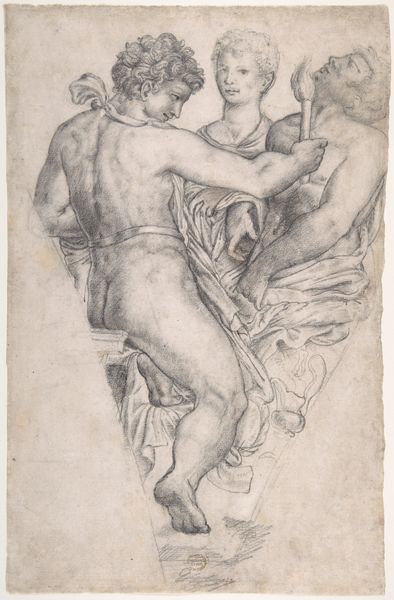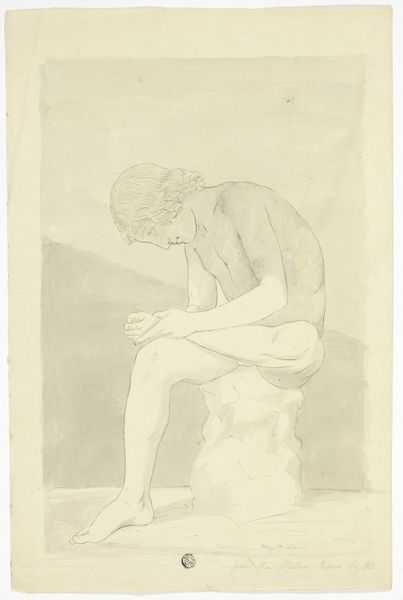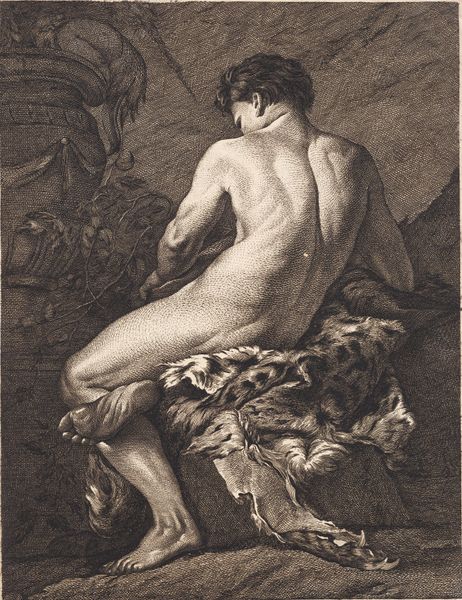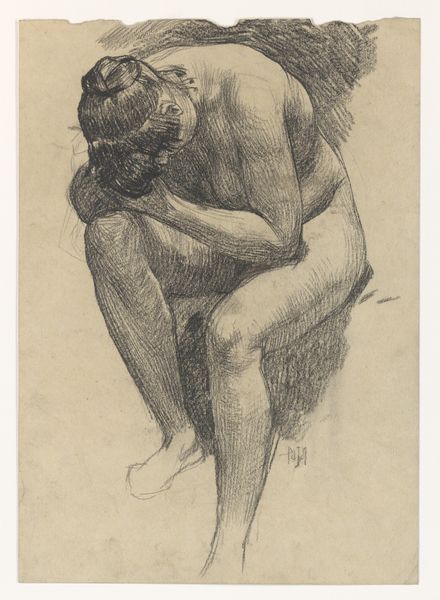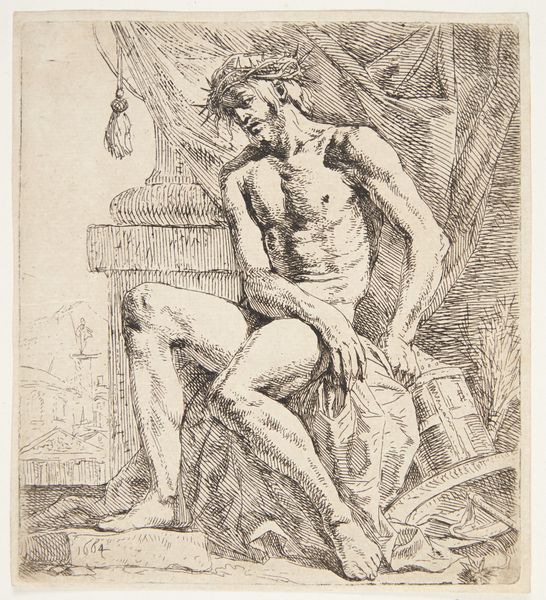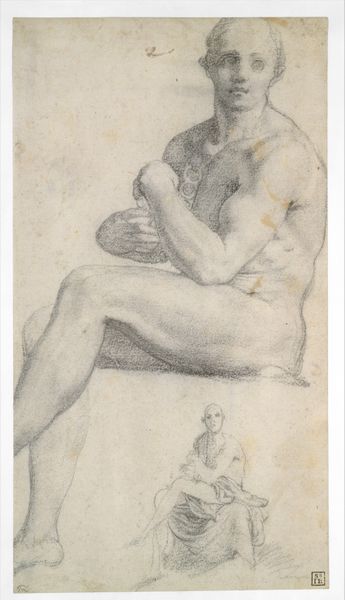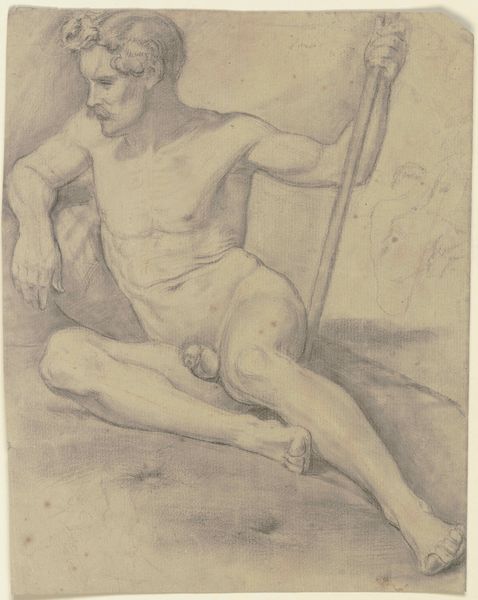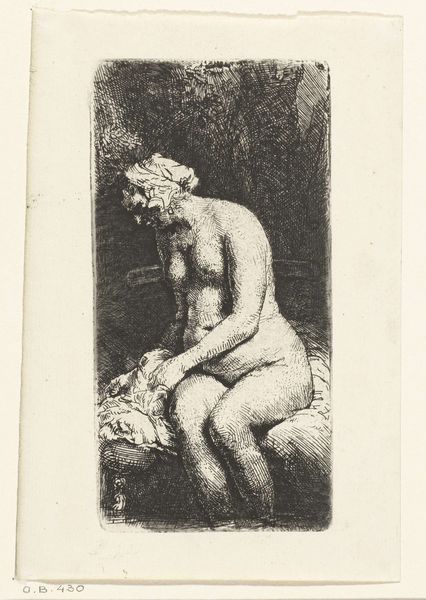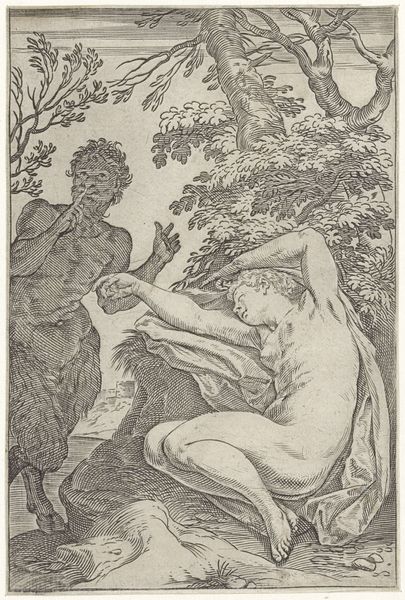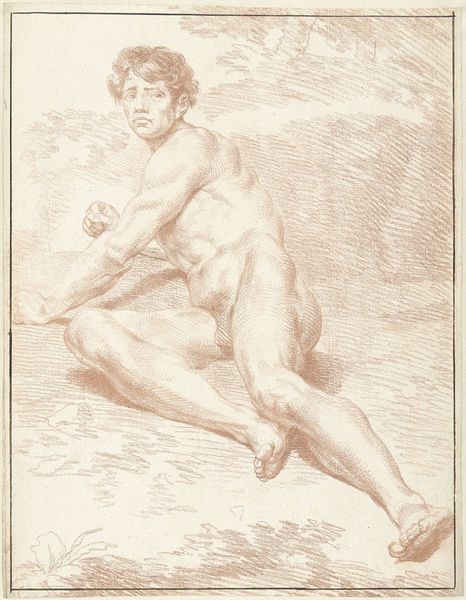
print, etching
#
allegory
# print
#
etching
#
landscape
#
academic-art
#
italian-renaissance
#
nude
Dimensions: height 294 mm, width 186 mm
Copyright: Rijks Museum: Open Domain
Curator: Let's spend a few minutes looking at Girolamo Mocetto's etching, "Dronken Bacchus zit bij wijnstok met wijnkruik," placing us within the Italian Renaissance, circa 1495 to 1510. What's your immediate sense of it? Editor: Well, he certainly looks like he’s regretting something! I mean, Bacchus has that whole "hair of the dog" thing going on in his expression. A total hangover, right there in delicate line work. Curator: Precisely. Mocetto’s strength lies in his use of line. Note the academic treatment of the male nude, achieved through detailed hatching and cross-hatching. The strategic placement of these lines serves not only to delineate form, but also to create depth and volume, pulling the viewer into the foreground. Editor: True. The etching work is just masterful. There's a delicacy that is really arresting, but then it does lack drama somehow, or contrast maybe? Feels muted. That is deliberate, right? Almost mournful. Curator: One could read it as deliberately muted, yes. The print's landscape setting integrates with Bacchus, but without overshadowing his central figure. The architecture in the background creates a narrative context for the scene. Consider the bridge. Is it purely decorative, or does it imply a link, a transition? Editor: Interesting thought! To me it reads as Bacchus isolated within this constructed paradise. The classical buildings are there, he's got his grapevine crown, but he's also supremely detached. Is it an allegory about the hollowness of pleasure? He’s gripping the thyrsus tightly too, maybe it isn't so easy being the god of wine, eh? Curator: Excellent. Mocetto utilizes allegory as a mode of visual storytelling, embedding symbolic elements that encourage a deeper reading of the work. We can discuss if it suceeds or not, but the attempt is apparent. The vine, the thyrsus, and the very posture of Bacchus offer cues into his internal state. Editor: Okay, I will say, there's something deeply melancholic about the scene, despite its supposed celebration of the wine god. And this is really heightened through that meticulous Italianate clarity that still feels kind of haunted. Like a perfectly drawn regret. Curator: Perhaps haunted, yes, a nice image. Considering its historical context, and Mocetto's command of line, this etching offers more than just an image. It offers, shall we say, a meditation. Editor: Right, a meditation on excess, maybe? And how even gods get the blues. Or maybe just a banging headache!
Comments
No comments
Be the first to comment and join the conversation on the ultimate creative platform.
